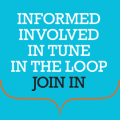As you embark on your career as a tax practitioner, you only ever have one chance to make a great first impression with each prospective employer, client or other stakeholder.
If that chance happens to be via email, it’s useful to know how to correspond in a professional manner.
Particularly when applying for a job, a work experience opportunity or a position in a graduate program, your initial contact probably will be by email. Your initial application, cover letter and any associated requests will be in writing and will be delivered to the hiring manager’s inbox.
To smarten up your email correspondence, consider these suggestions:
DO
- Use the subject field to clearly summarise the contents of your email message: This helps the recipient to categorise your email immediately. Many people won’t even open an email that has an ambiguous subject line.
- Open and sign-off formally: Err on the side of formal rather than casual or familiar. If addressing an employer called Michael Chen, best not to open with ‘Hey Mike’. Better to begin with ‘Dear Mr Chen’ and end with ‘Sincerely’ or ‘Kind regards’. The reply (usually less formal) will indicate the level of engagement the recipient prefers. Try to avoid going below that level.
- Start a new paragraph for each new idea or action item: Each paragraph need only be one or two sentences long and should serve a purpose. In fact, the entire message should be as concise as possible. Even if the recipient only scans the email, they should clearly understand who you are and what you want.
- Check your email before sending it: Make sure your spelling, punctuation and grammar are acceptable, and that any attachments mentioned are actually attached. You may even want to read the email aloud before sending to ensure it makes sense.
- Use an email signature block: Even a basic signature that includes your contact details looks more professional than none. It helps the recipient to have your contact details at the ready.
DON’T
- Use an email address that may reflect badly on you: Remember that email address you had when you were 15 – perhaps skaterboy007@hotmail.com or pinksunset14@yahoo.com? Best not to use it for professional correspondence.
- Use emoticons, slang or curse words: Even if you know the recipient well, the email may be forwarded to others who don’t know you.
- Forget why you’re sending the email: The email has a purpose. Make sure everything in it serves that purpose, whether it’s supporting your application for a position or trying to elicit a specific answer to a question.
- Pester the recipient: Just because an email is easy to send doesn’t mean you should repeatedly ask for updates. If you’re concerned at the lack of response – especially if the recipient said they’d get back to you by a certain time – pick up the phone and call them. If the recipient is unavailable, you may be able to speak with someone else.
Learning to use email in a professional manner will serve you well beyond the application stage.
Developing good habits now will help you communicate with clients and colleagues in a more effective way for years to come.
Give yourself the edge with free student membership
If you're a tertiary education student, The Tax Institute can help you progress in your career.
Find out about Student Membership.





